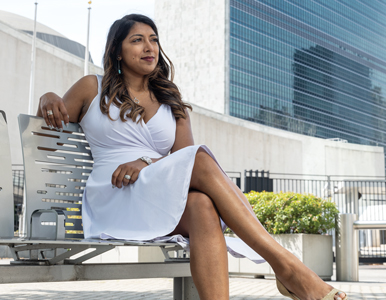
In 2016, more than 1 out of every 200 people around the world were living in modern slavery, an umbrella term that includes forced labor, human trafficking for labor and sexual exploitation, and forced marriage.
Modern slavery is neither victimless—more than 40 million people, 71 percent of them women, are exploited, per the 2018 Global Slavery Index—nor consumer-less. Each year G20 countries alone import $354 billion in goods and services at risk of being produced by forced labor. About 40 percent of that ends up in the United States.
A worldwide evil is measurable thanks to human rights statistician Davina Durgana, who began coauthoring the Global Slavery Index as a doctoral student in the School of International Service. She has spent the last decade modeling vulnerabilities, risks, and estimates of modern slavery, which exist “in every industry, from the clothing we wear to the smartphones and computers we use.”
In 2012, she began working on her dissertation modeling the prevalence of human trafficking in the US while working overnights on the Polaris Project’s National Human Trafficking Hotline. Durgana continues applying her models globally as the quantitative research lead for the Minderoo Foundation’s Walk Free initiative.
This summer, she is teaming up with United Nations’ International Labour Organization to publish a follow-up of their Global Estimates of Modern Slavery report. And this fall, Walk Free will release its latest Global Slavery Index.
Durgana’s work has garnered prestigious accolades, from her inclusion in #IfThenSheCan—an exhibition of 3D-printed statues of 120 female STEM innovators, hosted by the Smithsonian this spring—to a yearlong visiting professorship at Oxford that wrapped in June. Hopefully it’s also grabbed your attention.
“We need everyone at every level of government and civil society to take ownership of this collective problem,” she says of the “ubiquitous” crisis she’s helped to quantify. “It can only be solved through collaboration and attention to data.”